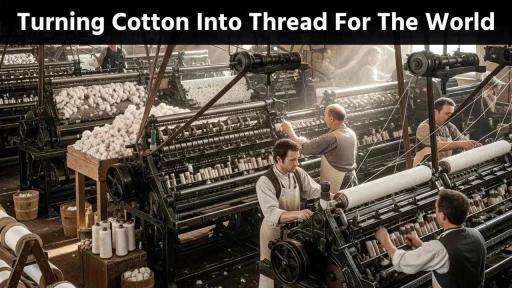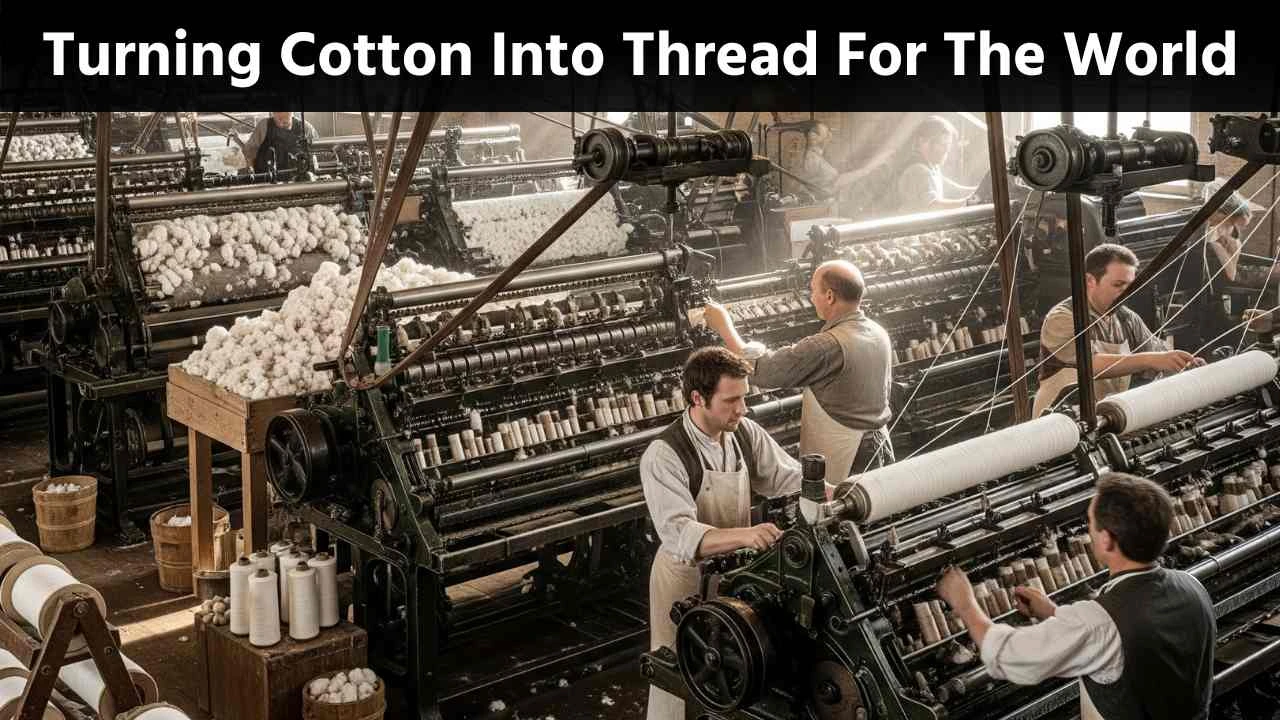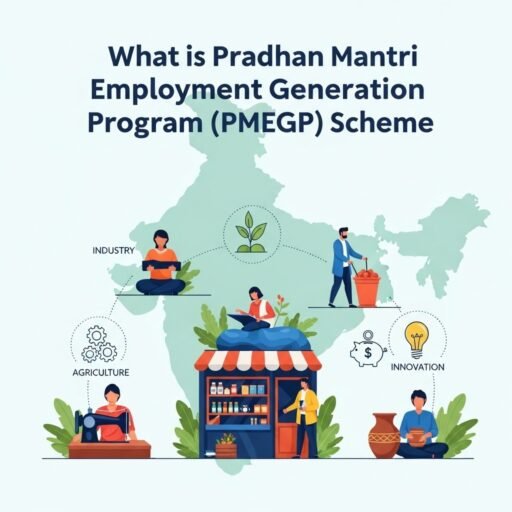Spinning mills are factories where cotton fibers or other fibers turn into thread or yarn. The yarn creates fabric, clothing, and other textile products. Spinning mills are an integral part of the textile industry. The spinning mill is a major part of the textile industry.
A spinning mill is simply a place that cleans, pulls, and twists raw cotton to produce long threads. And, these threads is must for weaving and knitting. Spinning mills are a way to turn natural resources into products that people can use.
Learn about spinning mills, how they are important, and why they are so special.
History Of Spinning Mills
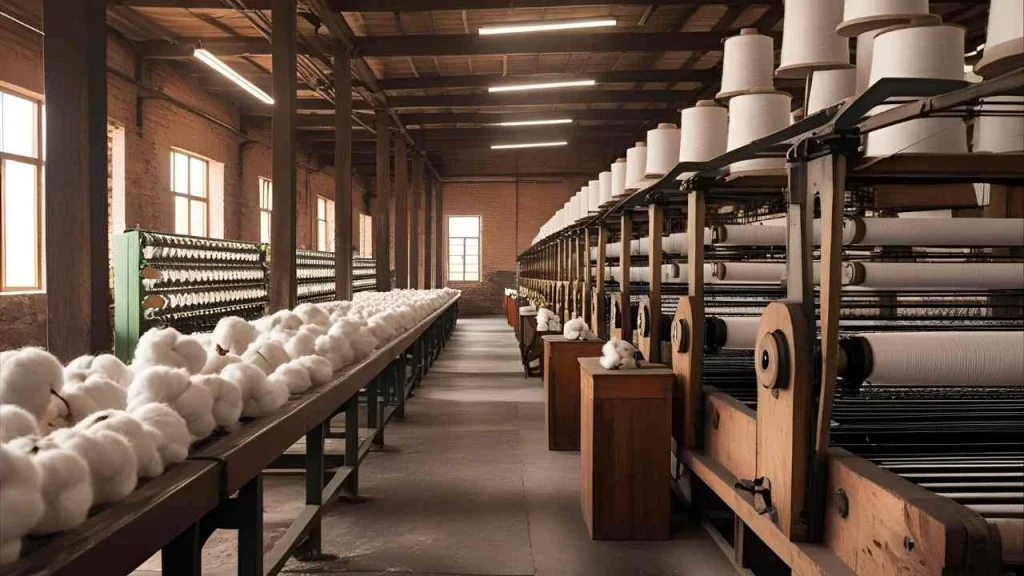
Since thousands of years, spinning is manual. In the past, people spun thread at home using spinning wheels. In the 18th century machines were invented. The machines made it possible to spin more and faster.
During the Industrial Revolution, England was home to the first spinning mill. Mills slowly spread throughout the world, including India. Modern spinning mills can produce tons per day of yarn using modern machines.
Read More: How to Start a Profitable Kidswear Franchise in India
How A Spinning Mill Works
The spinning mill uses several steps to convert cotton into yarn.
Ginning
Bales of cotton arrive at the mill. The cotton is then ginned to remove seeds and waste.
Blow Room
In the blow room, the cotton is cleaned and opened again. Here, the large lumps of cotton are broken down into smaller pieces.
Carding
Carding machines remove dirt and comb cotton fibers. The fibers of the cotton are arranged to create a soft sheet known as a sliver.
Drawing
To improve uniformity and strength, several slivers can be combined.
Roving
The fiber is then twisted slightly and wound on bobbins. The roving is then prepared for the final spinning.
Read More: Start Flourishing Business of Manufacturing Readymade Garments
Spinning
The roving will be twisted and pulled to create yarn. The yarn is then gathered on large reels.
Winding
First, they wind the yarn onto cones or spindles—otherwise, you’d end up with a giant mess when you start knitting or weaving. Next, machines jump in and do their thing, but people handle a bunch of steps, too. So, from start to finish, it’s a pretty hands-on process, just with some tech to speed things up.
Types Of Spinning Mills
The raw material that is used to make the spinning mill determines which type of spinning mill it will be.
Cotton Spinning Mills
Raw cotton is for cotton yarn. In India and Asia, they are most common.
Wool Spinning Mills
Sheep’s wool utilization is must for making warm woolen yarn.
Synthetic Spinning Mills
Man-made materials like nylon, polyester or acrylic make this fibers.
Read Our Book On Textile Spinning & Processing
Blended Spinning Mills
Mixing two or more fibers like cotton and polypropylene is common.
Importance of Spinning Mills
Spinning mills play a vital role in the textile industry. Here’s why:
- The yarn they produce is the basis for all fabrics
- Cotton and wool supports the agriculture
- The company provides jobs for thousands of workers
- Exporters can earn foreign currency and help with the export business
- They are a great support for local economies, particularly in rural areas
Want To Know About Which Business Idea Would Be Better For You?
Go Through Our Startup Selector Tool
Machines Used in Spinning Mills
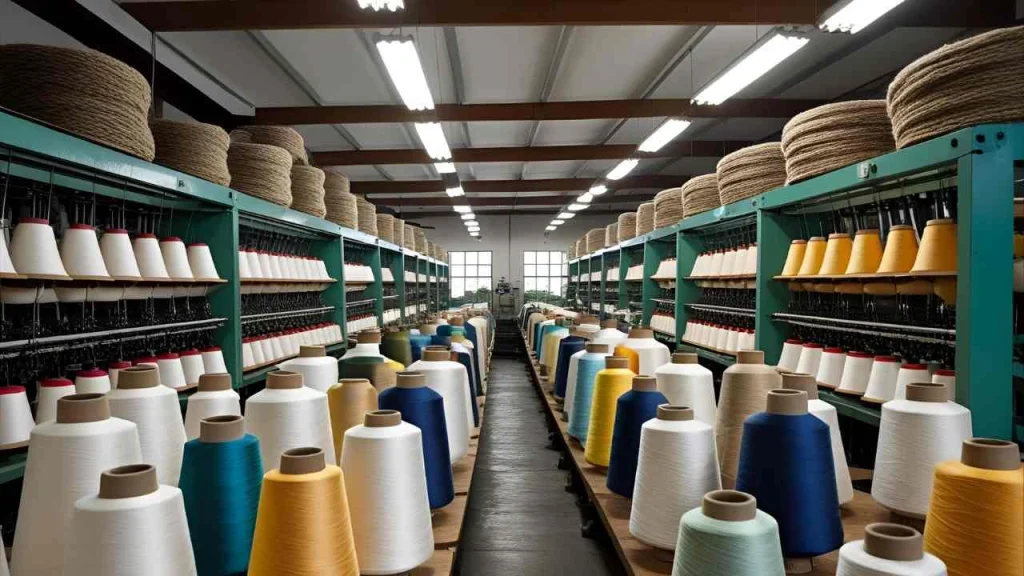
Each machine plays a specific role.
- Ginning machines
- Blow-room cleaners and openers
- Carding machines
- Drawing frames
- Roving frames
- Open-ended spinning machines or ring spinning machines
- Machines for winding and packaging
They are efficient and fast. These machines help to reduce waste and save time.
Environmental Impact
Electricity, water and chemicals power spinning mills. They must also take care of their environment.
- Energy-saving devices
- You should reat Waste water before released
- Dust pollution can cause air pollution
- You can recycle Cotton waste wherever possible
Solar power and eco-friendly technologies are necessary for some spinning mills to go green.
Read More: How to Launch a Profitable Clothing Franchise in India
Working Conditions in Spinning Mills
Spinning mill workers perform many tasks, including machine maintenance, cleaning and packaging. Good mills provide:
- Lighting and ventilation are important.
- Safety training and protective equipment
- Regular breaks and fair wages
- Drinking water and toilets that are clean
Both governments and businesses are working together to improve worker safety and reduce child labour.
Cotton to Cloth Journey
The spinning mill is only one of the steps in the process of making clothing.
- Farmers Grow Cotton
- Spinning mills make yarn
- Fabric is made by weaving or knitting mills
- Units help dying the fabric
- Garment factories stich fabric into clothing
- People buy clothes from shops
The textile supply chain is the name of this process.
Read Our TEXTILE AUXILIARIES PROJECTS
Conclusion: A Backbone of the Textile Industry
First off, spinning mills basically kick off the whole journey from cotton to closet. They grab that soft, fluffy cotton and spin it into the tough, reliable fabric we all depend on. Plus, as a bonus, they create jobs for farmers and workers along the way, feeding cash back into the local economy.
Meanwhile, these mills aren’t stuck in the past. Thanks to new technology, they’re getting cleaner and faster every year. On top of that, working conditions keep improving. So, these places aren’t just churning out fabric—they’re keeping the entire textile industry alive and kicking.
Honestly, when you understand what goes down inside a spinning mill, you start to respect the effort behind every shirt or dress you throw on. So next time you get dressed, just remember—it all started with a spinning machine doing its thing!
FAQs About Spinning Mills
Q1. What is the purpose of a spinning machine?
The raw cotton or fibers are turned into thread or yarn.
Q2. How many workers are in a spinning mill?
Small mills can have as few as 50 employees, while large mills can have more than 500.
Q3. What is ring-spinning?
This is a way of spinning yarn using a ringframe to twist the fibers.
Q4. Are spinning mills only for cotton?
Yes, they also weave silk, wool and synthetic fibers.
Q5. Where are most spinning mills in India?
Many spinning mills are located in Tamil Nadu, Maharashtra Gujarat and Punjab.
Q6. What is the production of a spinning machine?
Yarn and thread are used to make clothing and fabrics.
Q7. Can spinning mills be harmful to the environment?
Yes, if not managed properly. Many mills are now following green practices.

